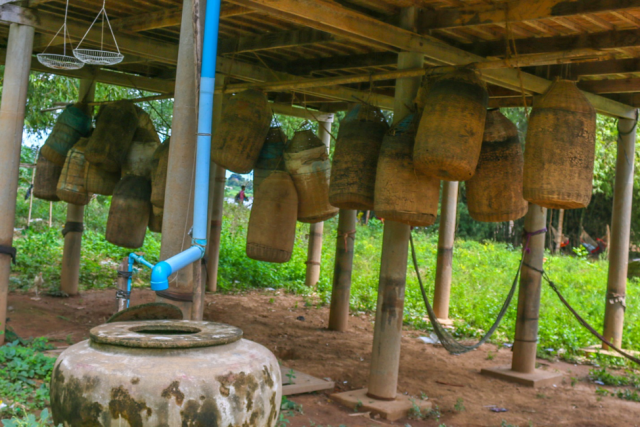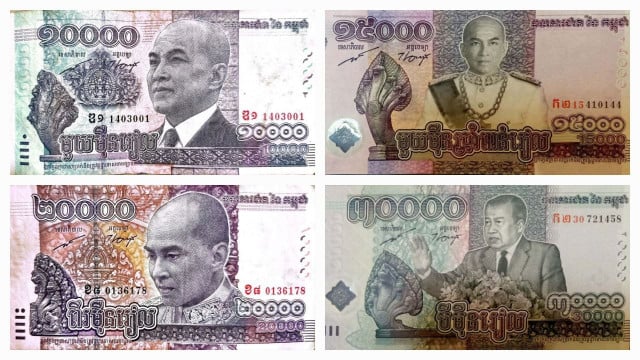Learn about the family fishing gear called "tom" or "poang" in Cambodia!

- By Chhut Chheana/ USAID Wonders of the Mekong
- August 31, 2019 5:16 AM
“Tom” is a kind of family fishing gear that has long been used by Cambodian people. We can still see it present in some provinces such as Kampong Thom, Kampong Chhnang, Kandal, Kratie and Steung Treng Province. Fishermen in some provinces call this fishing gear “Poang.
A “Tom” or “Poang” measures between 50 cm to 120 cm tall and 40 cm to 55 cm in diameter. It is made from thin bamboo sticks. The top part of the “Tom” or “Poang” has the shape of a water bottle which is 12 cm wide. The base has a hole or valve which is 4.5 cm in diameter that allows fish to swim into this trap. In contrast to other fishing gears that are made from bamboo, a “Tom” or “Poang” is securely hung by a rope to a branch of a tree or a pole in a vertical position.

“Tom” or “poang” hanging in a fisherman’s house along the Mekong River in Kandal province (Photo: Chhut Chheana)
A “Tom” or “Poang” is mostly used as a trap during the day where there is clear water or standing water and close to the bank. It is used in Tonle Sap Lake, floodplain areas of the Mekong River, the Bassac River, the upper Mekong River and its tributaries. Fishermen would hang “Tom” or “Poang” to a branch of a tree or a pole and submerge it, leaving the neck and top of this gear to stay above the water surface. Inside this fishing trap, fishermen put toasted sesame seeds, bran, pieces of termites’ nest or Prahok to attract the fish.
Fisherman use “Tom” or “Poang” at different times and places. It is used in Tonle Sap Lake and Tonle Sap River from June to December in floodplains of the Mekong River and Bassac River from June to October, and in the tributaries of the upper Mekong River from July to September
This fishing gear is used to catch different types of small fishes. These include several rasbora species, such as Slender rasbora (Rasbora daniconius) known as Trey Changva Chheut in Khmer, Pale rasbora (Rasbora aurotaenia) known as Trey Changva Moul, Yellowtail rasbora (Rasbora tornieri) known as Trey Changva Pka Chouk, Blackline rasbora (Rasbora borapetensis) known as Trey Changva Sraloung Chhnot, and Scissor tail rasbora (Rasbora trilineata).
Common species also include the Siamese mud carp (Henicorhynchus siamensis) known as Trey Riel Tob, Lesser silver mud carp (Henicorhynchus lobatus) known as Trey Riel Angkam, and Gymnostomus spp. known as Trey Riel Ampil. Other interesting species include the Mekong flying barb (Esomus longimanus) known as Trey Changva Pleang Sre, Moonlight gourami (Trichogaster sp) known as Trey Kampleanh Pluk, and Three-spot gourami (Trichopodus spp.) known as Trey Kampleanh Sre.
Climate change, over fishing from the past until present day, and the use of illegal fishing gears especially electro fishing gears has caused serious problems to fish species in general. Additionally, construction of hydropower dams can cause serious challenges to migratory fish for spawning. Please protect fisheries resources for our next generation!















